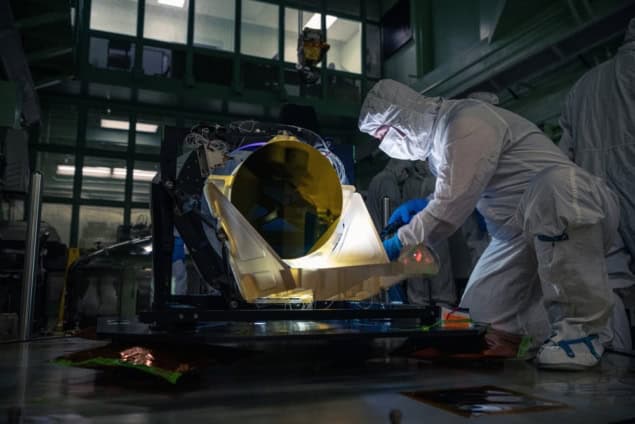
NASA has released the first images of a full-scale prototype for the six telescopes that will be included in the €1.5bn Laser Interferometer Space Antenna (LISA) mission.
Expected to launch in 2035 and operate for at least four year, LISA is a space-based gravitational-wave mission led by the European Space Agency.
It will comprise of three identical satellites that will be placed in an equilateral triangle in space, with each side of the triangle being 2.5 million kilometers – more than six times the distance between the Earth and the Moon.
The three craft will send infrared laser beams to each other via twin telescopes in the satellites. The beams will be sent to free-floating golden cubes – each slightly smaller than a Rubik’s cube — that are placed inside the craft.
The system will be able to measure the separation between the cubes down to picometers, or trillionths of a meter. Such subtle changes in the distances between the measured laser beams will indicate the presence of a gravitational wave. European Space Agency gives construction go-ahead for LISA gravitational-wave mission
The prototype telescope, dubbed the Engineering Development Unit Telescope, was manufactured and assembled by L3Harris Technologies in Rochester, New York.
It is made entirely from an amber-coloured glass-ceramic called Zerodur, which has been manufactured by Schott in Mainz, Germany. The primary mirror of the telescopes is coated in gold to better reflect the infrared lasers and reduce heat loss.
On 25 January ESA’s Science Programme Committee formally approved the start of construction of LISA.



